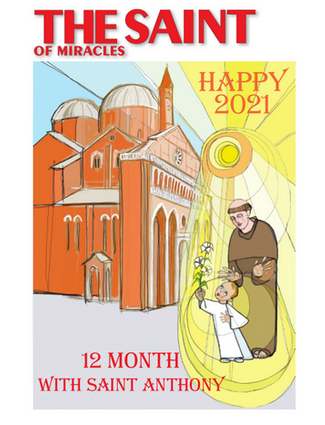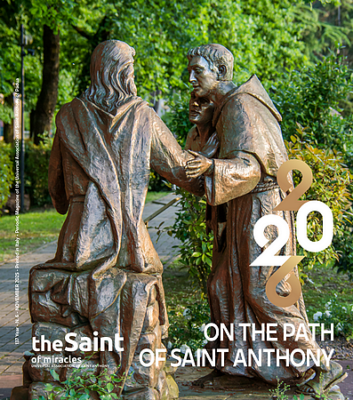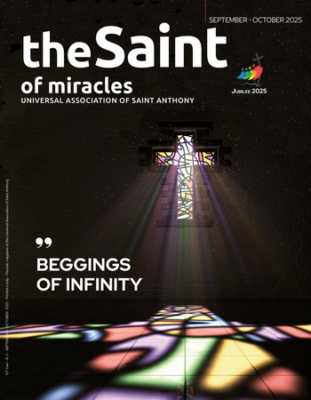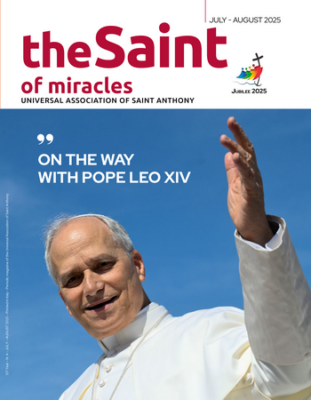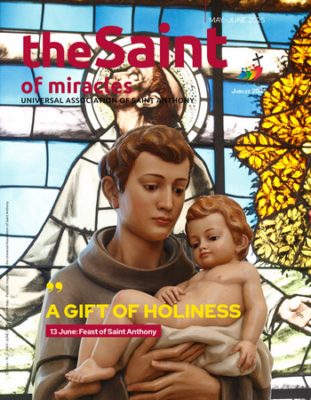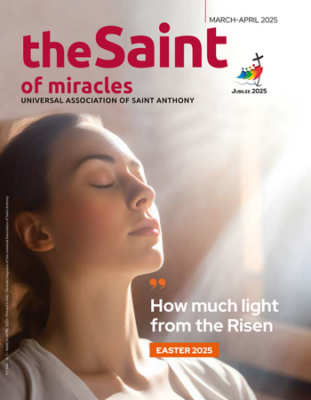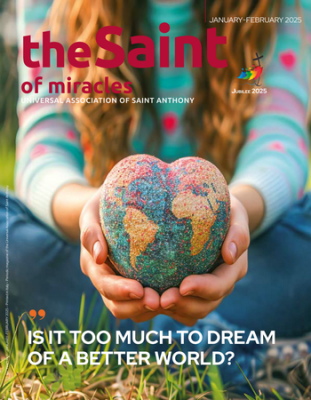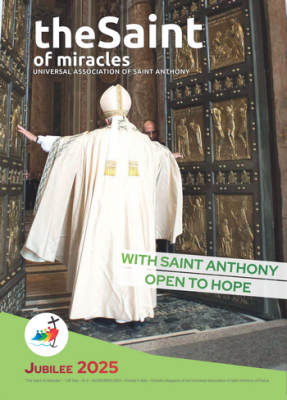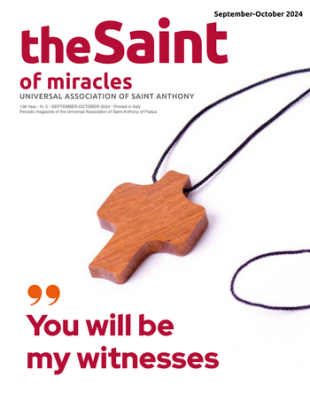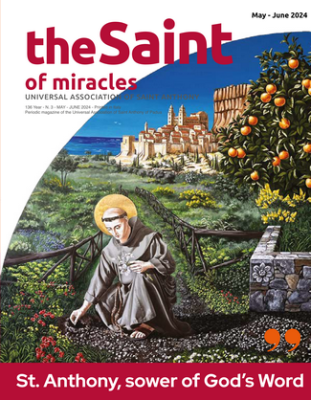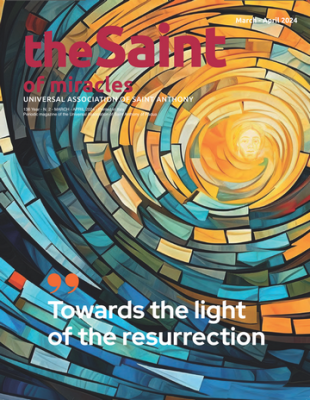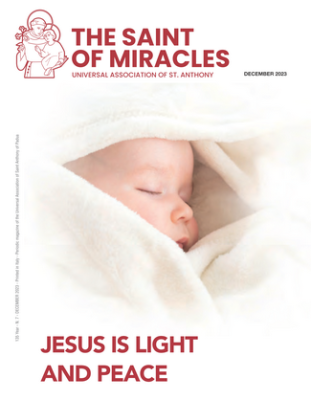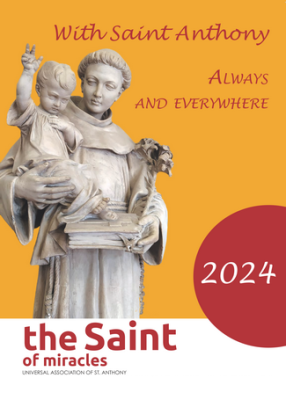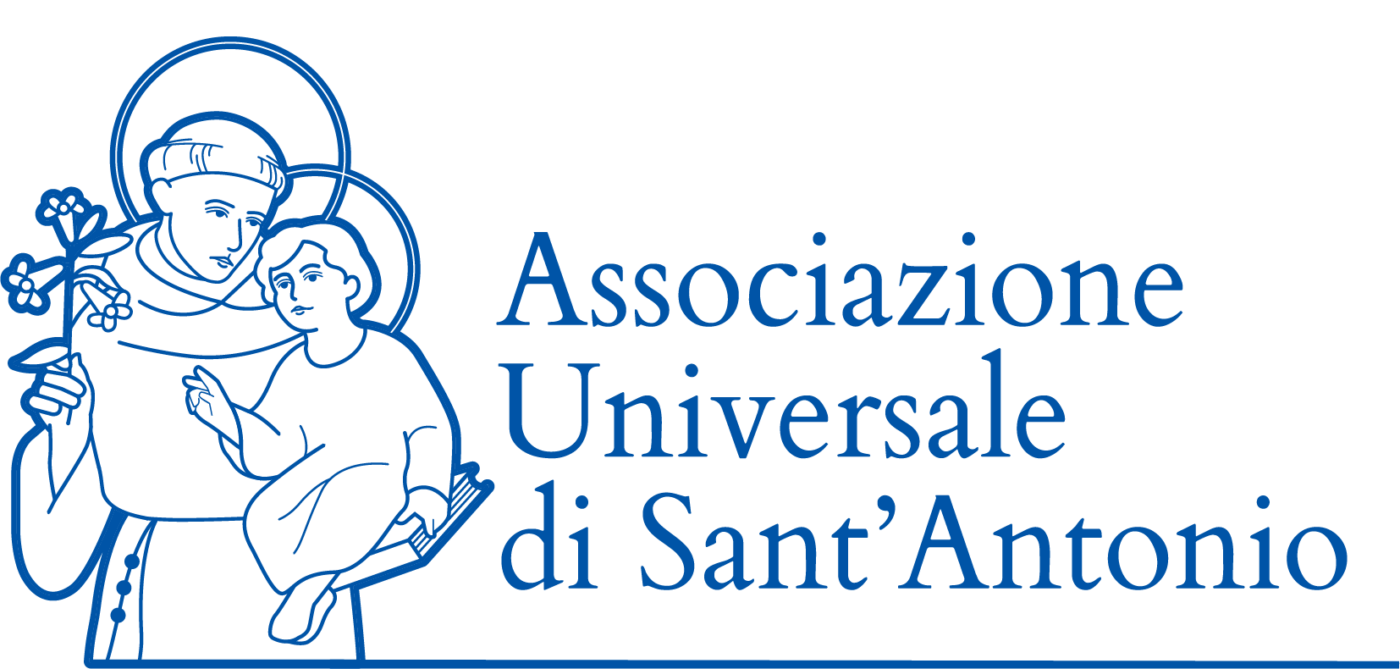Year 132 - November 2020Find out more
The power of symbols
Fr. Livio Tonello, director

It is the first page of a new year. We can only open it with the hope that the time ahead will be peaceful for everyone. Months, days, hours that we always welcome as the grace of the Lord, a gift offered, and a chance to do good. Our life finds its value if lived in the realization of the project inscribed in our being unique and unrepeatable people with the many charisms and gifts we possess. This project unravels as we understand its meaning and know how to value ourselves.
As always, we entrust these 12 months to the intercession of Saint Anthony. The iconographic references place him once again at the centre so that we can have him under our eyes and let ourselves be looked at by him.
This year the figure of the great Saint is proposed again in symbolic form. His person speaks to us through aphorisms (sayings, incisive messages, post we say today). Great wisdom is condensed in a short sentence, which normally refers to the words of Jesus and the wisdom inscribed in the Gospel. Eloquent words that find an echo in the proposed symbolic representation.
The representations devised by Giustina De Toni are evocative, sympathetic visual interpretations of the message coming out of the Saint's mouth. Life and faith are often nourished and expressed through signs and symbols. The liturgy is rich in them, using water, oil, the cross, bread and wine, gestures, and postures of the body to say what lies beyond. It does so not only with words or reasoning but with elements that belong to everyday life. These are the same natural things that make up life.
The miracles we attribute to Saint Anthony are also “signs” of God's love. The desire to solve human problems reminds us of what is beyond our capacity to strive for the benevolence of the Creator. In life, gestures say more than words. A flower has a very high symbolic value for two people who love each other. The depiction of a heart spurs us to feelings and actions that we sense are already rooted in human nature itself.
The days of the year are also marked by signs and symbolic representations. Seasons and equinoxes, anniversaries and commemorations express the passage of time and the memory of what was. Tempus fugit, the ancients used to say, and memory is a way of retaining and making present what is no longer there. And so we surround ourselves with objects, images, “memories” to keep in our minds and hearts what was significant for us.
We can no longer relive that experience, but we can revivify its effects because our body preserves the memory of the experience. The senses are a formidable “database” because they preserve perceptions: so we know that fire burns, so we are careful how much chilli pepper we put in the pasta... the whole body is “memory”.
The names of the Saints and Blessed reported day by day remind us that someone was able to live the Gospel, that it is possible to follow the Master in the way he traced. This is the most important wish we can make at the beginning of this new year: to follow day by day in the footsteps of our Lord, as did Saint Anthony who we put before us once again on the path of these 12 months.


 Italiano
Italiano Français
Français